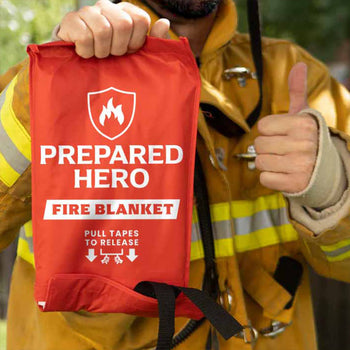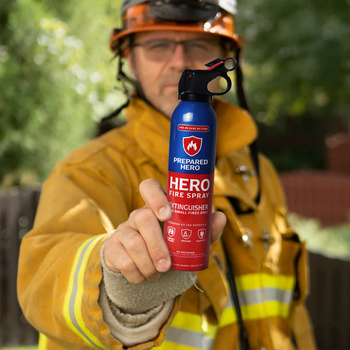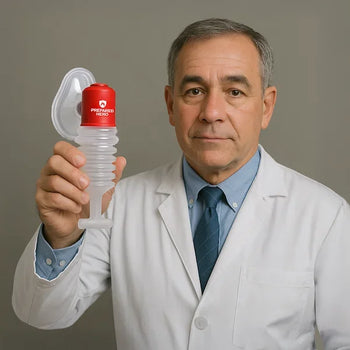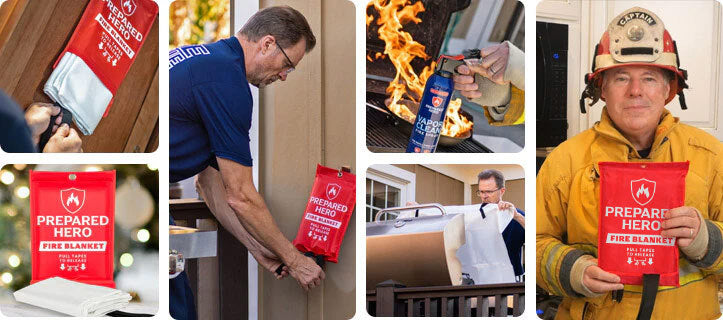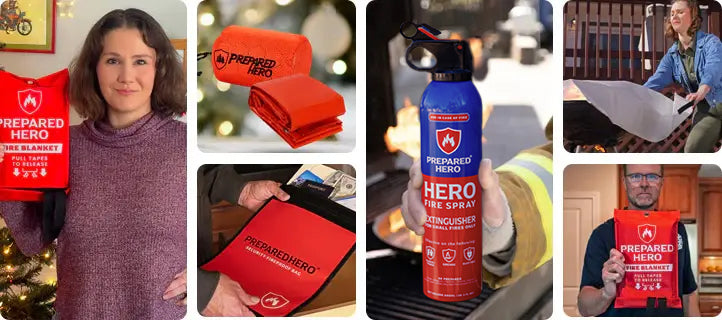Where you put your smoke detectors matters just as much as installing them. Proper placement makes sure they can detect...
Knowing the right tools to protect yourself is crucial when it comes to self-defense. Mace and pepper spray are common options, but many people get confused. Are they the same? Which is better? Are they legal to use?
In this post, we’ll break down the key differences between mace and pepper spray so you can make an informed choice. Whether you’re looking for something to carry in your bag or just want to understand how these tools work, we’ve got you covered.
What Is Mace?

Mace is often used to refer to any kind of self-defense spray, but it's actually a brand name that’s been trademarked for specific products. Over time, the term has been associated with pepper spray and other self-defense sprays, even though the original formula was different from what we use today.
Mace was originally a type of chemical spray that contained phenacyl chloride (also known as chloroacetophenone, CN, or tear gas). This chemical is an irritant that causes burning sensations in the eyes, throat, and skin. It could temporarily disable someone by causing intense discomfort. As a result, it was used for self-defense and crowd control.
However, mace wasn’t completely effective against people under the influence of drugs or alcohol. The formula was also toxic and unsafe, leading to a lot of injuries for police officers who used it. Because of these issues, this version of Mace was eventually phased out to make way for safer formulas.
Today, the term is more commonly used to refer to self-defense sprays made by the company Mace®. These products include pepper spray, which contains oleoresin capsicum (OC). Pepper spray is considered more reliable than CN-based mace. This is because it’s effective against people who are under the influence of drugs or alcohol.
Fun fact: There’s also a spice called mace, which comes from nutmeg. It is unrelated to the chemical and brand name mace, but it’s an interesting coincidence.
How Does Mace Work?

The original mace worked by using a chemical called phenacyl chloride (CN). When sprayed, CN causes intense irritation to the eyes, nose, and respiratory system. The chemical also triggers an immediate reaction that makes the eyes water, causes burning sensations, and leads to difficulty breathing. In addition, the intense discomfort forces the person to stop what they’re doing, often forcing them to close their eyes.
The purpose of this is to incapacitate an attacker or control a crowd. The pain and confusion usually lasts for 15 to 30 minutes. This gives someone enough time to escape or authorities to take control. However, it didn’t always work well on people with high pain tolerance or under the influence of drugs and alcohol. For these reasons, the original mace formula was phased out.
Today, the mace we know refers to self-defense products that include pepper spray. Sometimes, people use mace and pepper spray interchangeably. Mace works by producing a powerful burning sensation in the eyes, nose, throat, and skin. This temporarily blinds human attackers so they can’t harm you. Plus, today’s mace is designed to work on everyone. As a result, it’s more reliable than old mace.
How to Use Mace

Mace might be designed to defend you against violent people, but it can hurt you as well. Knowing how to use it properly prevents you from hurting yourself. Here’s a step-by-step guide on using mace:
1. Grab the Mace
Grab the mace from your holster, bag, or belt loop. Firmly hold the can with your dominant hand. This lets you be in control and prevents the attacker from getting it from you.
2. Aim It at the Attacker’s Face
Target the attacker’s eyes, nose, and mouth. These areas are sensitive, and spraying the mace there immediately irritates your attacker. Aiming for the eyes causes temporary blindness, while aiming for the nose and mouth causes difficulty breathing.
3. Spray All Over
Most sprays have safety tabs that prevent them from accidentally discharging. Flip this off after locking your target. Then, press the button or trigger. Keep on spraying until you cover the attacker’s face. Be ready to use your mace again if needed. Some attackers don’t back off immediately, so stay ready.
4. Call the Authorities
Get to safety as soon as the attacker backs off. Go to a well-lit, populated area where you can stay safe until help arrives. Then, call the authorities and let them know what happened.
What Is Pepper Spray?

Pepper spray is a self-defense tool that temporarily disables an attacker. The active ingredient is capsaicin, a compound found in chili peppers. When sprayed on someone's face, the attacker won’t see or breathe properly for some time. The spray also works quickly, and attackers often have a hard time fighting back. This gives you a chance to escape and get help.
Pepper sprays are designed to be user-friendly and portable. Their effects can last up to one hour, depending on the person’s sensitivity to its ingredients. For example, pepper spray gives you enough time to run when someone tries to mug or assault you.
In addition, pepper sprays come in many sizes and designs―from pepper spray keychains to bigger ones with maximum strength. Most of them spray a stream or mist, which allows you to aim and use your pepper spray from a safe distance. So, even if the attacker comes at you, you don’t need to get close to them to defend yourself.
Pepper sprays are widely available and legal throughout the United States. However, some states have specific rules about how and where to use them. For example, pepper sprays can’t be sold to minors in California, Wisconsin, and Illinois. Retailers should also have licenses to sell them in Hawaii and Massachusetts.
How Does Pepper Spray Work?

Pepper spray works by irritating the attacker’s eyes, nose, and throat almost instantly. First, they’ll feel a sharp, intense burning sensation, especially in their eyes. The pain then forces their eyes to water and close. As a result, their vision becomes blurry. It’s similar to getting hot sauce on your eyes but much stronger.
Pepper spray also causes burning on the skin, especially on the face and neck. The discomfort quickly spreads, and the attacker will feel like they can’t breathe properly. Their throat then hurts. Breathing becomes shallow and labored, and they might cough or choke.
These effects make it difficult for the attacker to continue their assault. They become disoriented, confused, and temporarily incapacitated. Pepper spray also affects the attacker’s ability to think clearly, allowing you to escape or get help.
How to Use Pepper Spray

Knowing how to use pepper spray properly makes you feel more confident and prepared in any situation. Here’s how to use this powerful self-defense tool properly:
1. Grab Your Spray
First, get a solid grip on the can. Hold it firmly so your attacker can’t take it away from you. Stay calm and make sure it’s safe in your hands. You don’t want to fumble with it when you need it most.
2. Aim at the Attacker
Aim for their face—specifically the eyes, nose, or mouth. These areas are the most sensitive, so the spray will be most effective there. Don’t aim at their chest or lower body because this won’t stop them as quickly.
3. Spray All Over
Once your aim’s locked in, flip the safety tab off (usually a small switch) and press the button or trigger. You’ll want to do short bursts first. If they keep coming at you, spray again, but longer. The goal is to create space between you and your attacker so you can escape and call for help.
4. Call the Authorities
Once you’re safe, call the police immediately. Don’t panic and give clear details. Stay in a well-lit and populated area until they arrive.
Mace vs. Pepper Spray: The Differences

For the purpose of this comparison, we’re referring to mace as the original formula, not the brand name or term for self-defense sprays.
Mace and pepper spray are used for defense, but they’re not exactly the same. However, they’re formulated for different situations. Here’s a breakdown of the differences between mace and pepper spray:
Purpose
Mace was originally developed for individuals and crowd control. It was often used on protesters or in situations where the police had to disperse large groups. It also contains tear gas that irritates the eyes and throat.
On the other hand, pepper spray is specifically made for personal defense against attackers. Unlike old mace, it doesn’t contain tear gas. It contains capsaicin, a substance found in chili peppers. Capsaicin causes intense burning, temporary blindness, and difficulty breathing. So, while both sprays are used to stop attackers, traditional mace could be used for crowd control, while pepper spray targets one person.
Composition
Mace and pepper spray contain chemicals that affect the body in distinct ways. Mace usually contains tear gas or similar chemicals that irritate the eyes, nose, and throat. They result in intense discomfort, coughing, and difficulty breathing. It’s designed to disorient an attacker or a crowd temporarily. Given this, mace had a higher concentration of chemicals than pepper spray.
On the other hand, pepper spray uses a substance found in hot peppers. This substance is way spicier than anything you'd find in your kitchen. On the Scoville scale, which measures spiciness, a typical pepper spray can range from 500,000 to 2 million Scoville Heat Units (SHU). To put that into perspective, a jalapeño pepper has up to 8,000 SHU, while a Thai chili pepper has up to 100,000 SHU. So, pepper spray is 250 times hotter than the spiciest jalapeño and five times hotter than the spiciest Thai chili pepper.
Range
In general, traditional mace had a longer range compared to pepper spray. Most mace products could reach up to 12 feet, which allowed them to ward off individuals and crowds.
On the other hand, most pepper sprays have shorter ranges, usually up to 10 feet. While it’s not as far-reaching as mace, pepper spray is still effective for personal defense. The shorter range allows you to fight a close encounter and release more concentrated bursts.
Size
Mace cans were larger and heavier than pepper spray cans. As a result, they’re less convenient to carry around in pockets or bags. However, the bigger size meant there was more product inside, which was useful for crowd control.
On the other hand, pepper sprays are smaller and more compact. As a result, they’re more discreet and lightweight. You can easily slip a small pepper spray can into your purse, belt loop, or backpack without taking up much space.
Effects
The old mace formula caused eye irritation, coughing, and trouble breathing. But it didn’t always stop an attacker. It wasn’t as effective against people with high pain tolerance or those under the influence of drugs or alcohol.
On the other hand, pepper spray works on almost everyone, even if they’re drunk, drugged, or have a high pain tolerance. This makes pepper spray a more reliable choice for self-defense. It works when mace won’t, so safety experts prefer it.
Legal Use
The old mace formula solely used a chemical called phenacyl chloride (CN). It was discontinued mainly because it was too dangerous. CN could cause serious health issues and was toxic in certain situations. It also wasn’t as effective as pepper spray, which works better at quickly stopping an attacker without the same risks.
On the other hand, pepper spray is more reliable. It can be legally used in many countries and all over the United States. However, some states impose restrictions on how and where to use them.
|
Feature |
Mace |
Pepper Spray |
|
Purpose |
Used for individuals and crowds |
Used for individuals |
|
Composition |
Contains phenacyl chloride |
Contains oleoresin capsicum |
|
Range |
Up to 12 feet |
Up to 10 feet |
|
Size |
Bigger and heavier |
Smaller and lighter |
|
Effects |
Doesn’t work on people with high pain tolerance or those under the influence |
Works on people with high pain tolerance or those under the influence |
|
Legal Use |
Discontinued and illegal |
Legal in many countries and the US |
Is Mace the Same as Pepper?

Mace and pepper spray are not the same, though people often use the terms interchangeably. The first mace formula solely used tear gas (phenacyl chloride or CN), which irritated the eyes and respiratory system. It was used for violent individuals and crowd control (often protesters). However, mace didn’t work well on people under the influence or those with high pain tolerance.
Mace was phased out because it was toxic and unreliable. Over time, mace became a trademarked brand name and was eventually used to refer to defense sprays. Sometimes, the term is used to refer to pepper spray, not the old CN-based formula.
Pepper spray uses capsaicin, the active ingredient in chili peppers. It causes intense burning and temporary blindness. Pepper spray is more reliable than CN-based mace because it works on those with high pain tolerance or under the influence of drugs and alcohol.
Is It Legal to Travel With Mace?

It is illegal to travel with CN-only mace. But it is legal to travel with mace in the US if you’re referring to pepper sprays. According to the Transportation Security Administration (TSA), a traveler is allowed to bring one can of mace or pepper spray in their checked baggage if it has a safety mechanism. You should also note that you can’t bring mace in your carry-on bag.
Why Is Mace Illegal?

The old, CN-only mace is illegal because it’s toxic and could harm the user and the attacker. Exposure to high concentrations of CN could lead to serious damage to the eye's outer layer. It can also cause severe skin irritation, blisters, and difficulty breathing. In some cases, it could cause fluid buildup in the lungs and suffocation. Over time, law enforcement and civilians switched to pepper spray because it’s safer and more reliable.
Is Police Pepper Spray Stronger Than Regular Pepper Spray?

Yes, police pepper spray is stronger than regular pepper spray. Police pepper sprays usually contain higher concentrations of capsaicin and related capsaicinoids (CRC) than those available to the public. In particular, police pepper sprays contain 5% to 10% CRC, while regular pepper sprays contain 0.18% to 1%.
What Is Better, Pepper Spray or Mace?

Pepper spray is better than mace. Mace originally contained harmful chemicals that could cause severe health issues like permanent eye damage, severe skin irritation, and suffocation. It also didn’t work well on people under the influence or those with high pain tolerance. On the other hand, pepper spray only has temporary effects and can work on anyone, including intoxicated people. Plus, pepper spray is legal all over the US, while traditional mace is not.
What Is the Best Alternative to Pepper Spray?

The best alternative to pepper spray depends on your needs and what’s legal in your area. Common alternatives include personal alarms, stun guns, and tactical flashlights. A personal defense alarm scares off an attacker by drawing attention. Stun guns shock attackers to temporarily incapacitate them, while tactical flashlights temporarily blind attackers. At the end of the day, the right self-defense tool depends on your needs and situation.
Prepared Hero Pepper Spray: Quality You Can Trust

Not all pepper sprays are made equal. Want to see how Prepared Hero’s Pepper Spray Keychain outshines the regular stuff? Check out this table, and you might just rethink your current choice.
|
Features |
Regular Pepper Spray |
Prepared Hero’s Pepper Spray Keychain |
|
Spray Quality |
Inconsistent; sprays all over the place, making it hard to hit your target. You and the attacker may both be affected. |
Sprays where you aim. You can easily hit your target while protecting yourself. |
|
Range |
Limited to just a couple of feet, allowing attackers to get too close before you can spray. |
Can work up to 12 feet. Keep a safe distance from attackers while defending yourself. |
|
Wind Sensitivity |
A little wind can blow the spray off target and into your face, leaving you helpless. |
Can be used effectively in windy or rainy conditions, ensuring accurate targeting. |
|
Shelf Life |
Short shelf life, typically one to two years. Might not work when you need it most. |
Reliable protection for five years, so you can trust it when it matters. |
|
Effectiveness |
Takes time to work. The spray needs to disperse in the air, allowing attackers time to act. |
Starts working instantly on contact, with a formula used by the military and police. |
|
UV Dye |
No UV dye, making it hard for authorities to identify the attacker after they flee. |
Has UV dye. Helps the police identify the attacker even after they escape. |
Check out Prepared Hero's Pepper Spray Max if you need a long-range pepper spray. It can work up to 20 feet. It also comes with a safety cover that prevents accidental discharge and easily moves out of the way, so you can use the spray extremely fast. It’s the perfect companion when you go out at night, walk alone, drive strangers, jog, or walk your dog.
Conclusion
Mace originally referred to a tear gas-based formula mainly used for crowd control. However, the old formula isn’t legal anymore. Today, mace is used to refer to self-defense sprays that are legal in many countries.
Given this, pepper spray is more reliable and safer than traditional mace. It also works against people with high pain tolerance or those who are drunk or on drugs. Knowing this helps you choose the right self-defense tools that work when you need them the most. Stay safe, hero!


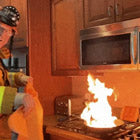 Fire
Fire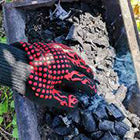 Safety
Safety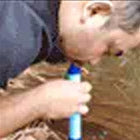 Survival
Survival Protection
Protection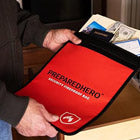 New
New Scouting America
Scouting America
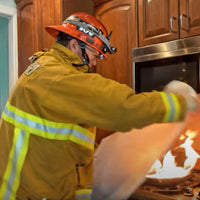 Fire
Fire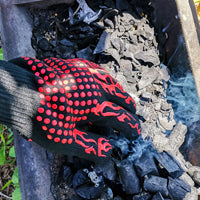 Safety
Safety Survival
Survival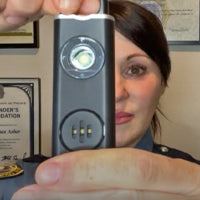 Protection
Protection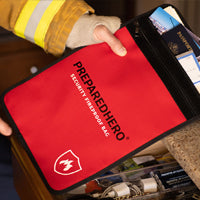 New
New
